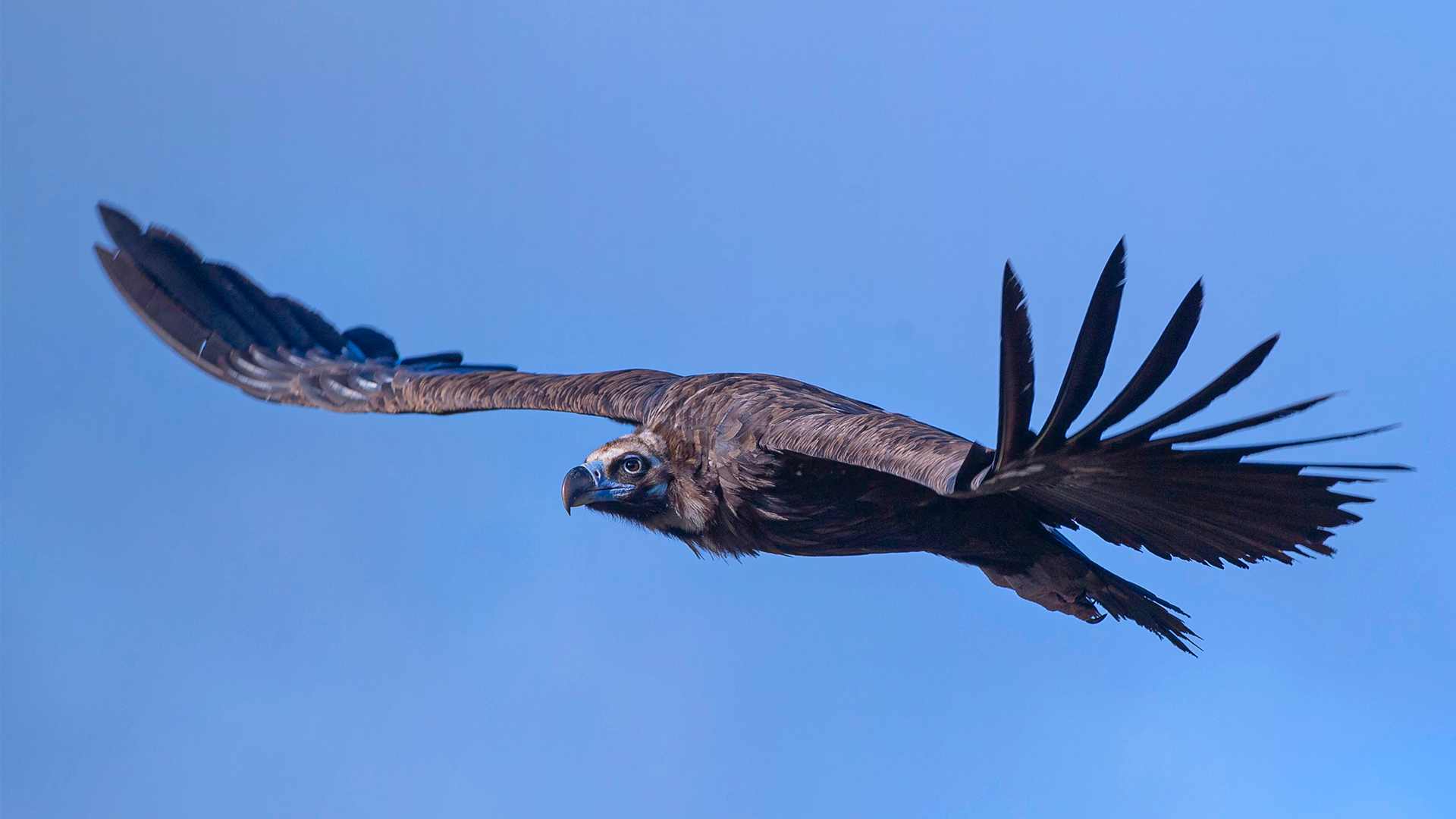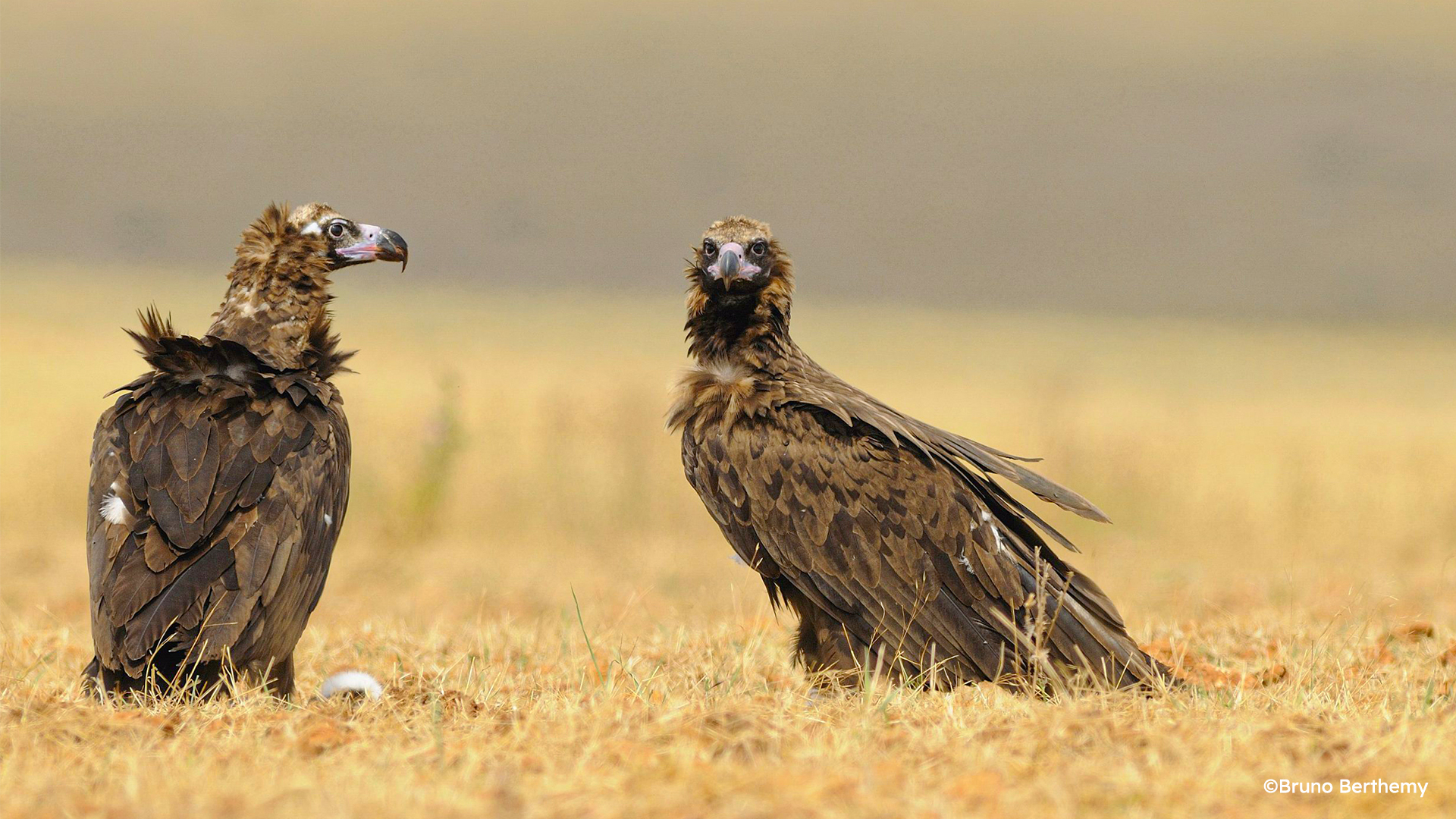There is something fascinating about the cinereous vulture (Aegypius monachus), the largest bird of prey in Europe. And despite running the danger of extinction some nests with chicks were discovered in Portugal in the first six months of 2023. This is, undoubtedly, a small step as regards the survival of this species in Portugal and is rather encouraging for those fighting to ensure its preservation.
Along with the Eurasian griffon vulture (Gyps fulvus) and the Egyptian vulture (Neophron percnopterus), the cinereous vulture (Aegypius monachus) is one of the types of vultures to be found in Portugal, although the latter is classified as Critically Endangered in our territory, according to the Red Book of Portuguese Vertebrates. The amazing thing is that this bird can live up to 35-40 years in the wild.
With a wingspan of around 3 meters when flying and an average weight of up to 11.5 kg this species has become the largest bird of prey in Europe and one of the largest, and heaviest, in the world. In terms of morphology, when they become adults, between the age of 3-6 years, these vultures display a short tail, plumage in shades of dark brown and their head is covered with a velvety greyish-brown fluff. However, in the juvenile phase, they are darker and their plumage is more homogeneous.
Where is the cinereous vulture to be found? These birds live preferably in places with extensive forest areas, grazing areas or cork oak forests , where they can find corpses of medium and large-sized wild and domestic animals to feed: domestic herbivores, such as sheep and goats, and wild herbivores, such as deer, but also corpses and smaller animals, such as rabbits (one of the main prey). This is, after all, an almost exclusively scavenger bird that rarely catches live prey.
However, vultures take advantage of thermal air currents to fly at high altitudes, forage for food and eat the carcasses of animals killed in the field, thus preventing the spread of diseases and ensuring the functioning of the ecosystem’s trophic network.






